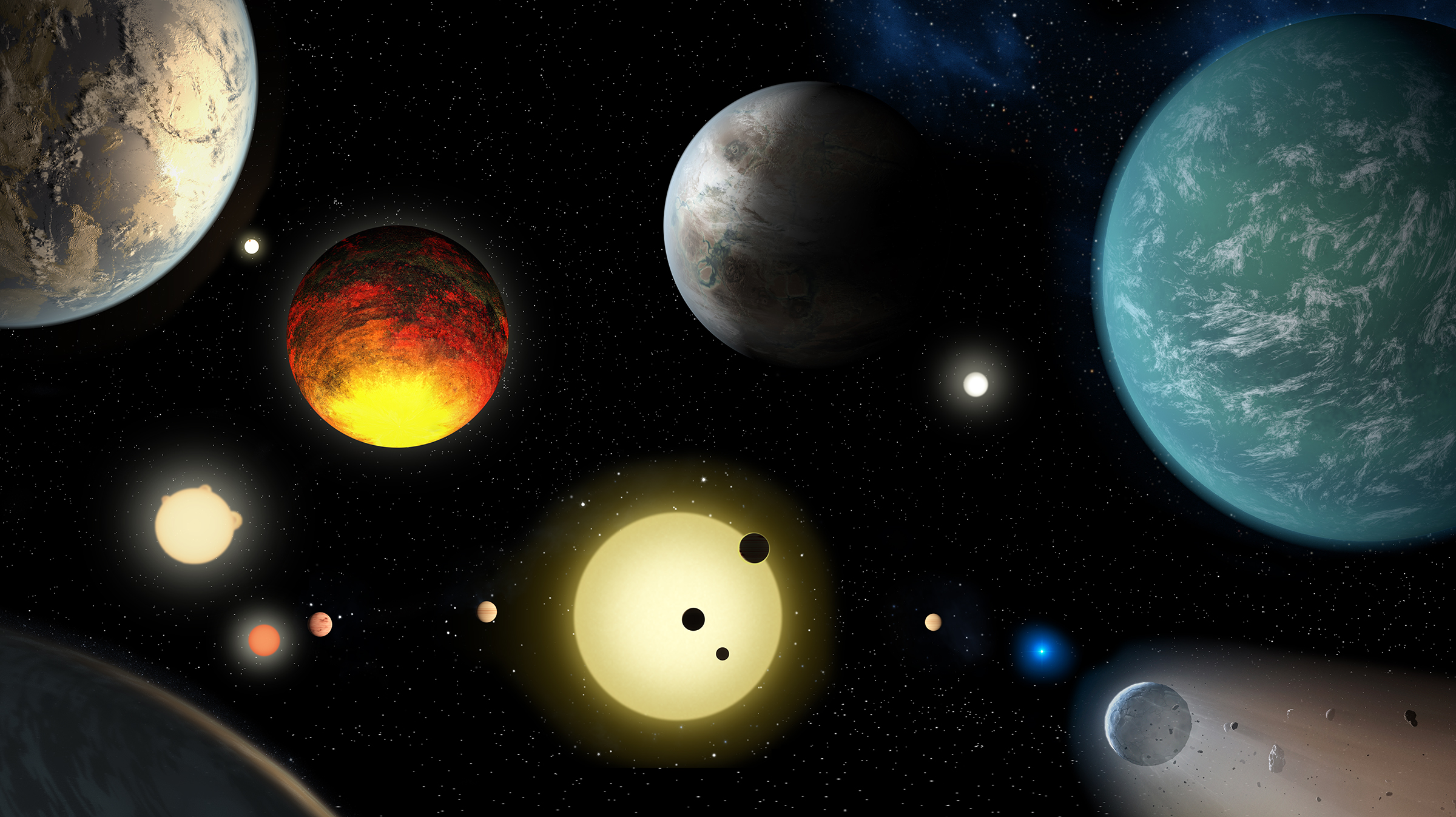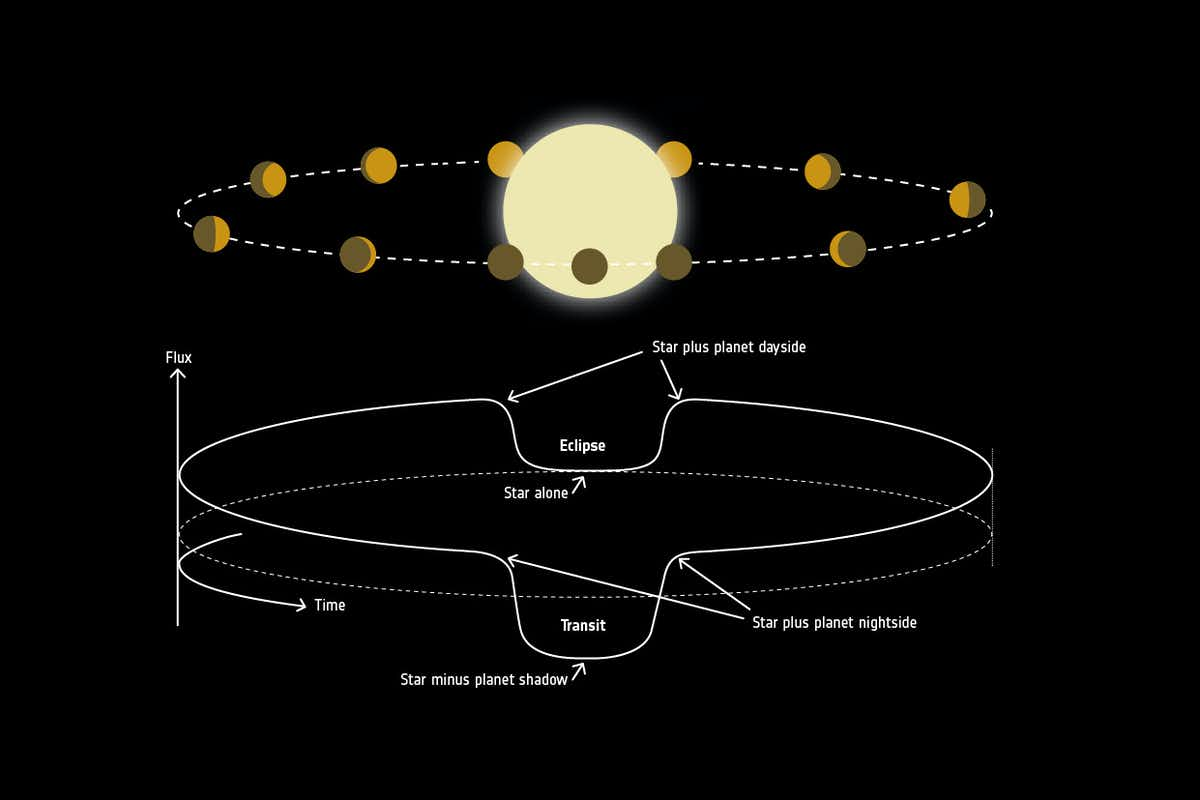
The James Webb Space Telescope will map the atmosphere of exoplanets

Exoplanets, planets that orbit stars other than the sun, are found at distances very far from Earth. For example, the closest exoplanet to us, Proxima Centauri b, is 4.2 light-years away, or 265,000 times the distance between the Earth and the sun.
To the naked eye, the planets in the solar system appear as bright spots. However, using a telescope, these dots stand out from the stars and reveal structures such as Jupiter’s Great Red Spot, Saturn’s rings, or the ice caps of Mars.
Although the presence of such phenomena is expected on exoplanets, their distance from the Earth prevents us from directly resolving their surfaces. Nevertheless, there are ways to learn more about the structure of their atmospheres and map them.
Live updates: NASA's James Webb Space Telescope mission
In photos: The Christmas launch of NASA's James Webb Space Telescope
I am a PhD student in astrophysics at the University of Montreal. My work is related to the characterization of exoplanet atmospheres. More specifically, my research focuses on the development of tools to map the atmosphere of exoplanets using observations from the James Webb Space Telescope.
The telescope, launched on Dec. 25, 2021, is expected to revolutionize the field of exoplanetary science.
Get the Space.com Newsletter
Breaking space news, the latest updates on rocket launches, skywatching events and more!
Detecting and characterizing exoplanets
Apart from a few special cases where light from a planet can be observed directly, the majority of exoplanets are detected using indirect methods. An indirect method consists of observing the effect of the planet’s presence on the light emitted by its star.
The transit method has led to the greatest number of exoplanet detections. A transit occurs when, from our perspective, an exoplanet passes in front of its host star. During the transit, the light from the star decreases as the star’s surface is partially obscured by the planet.
Light is divided into a spectrum of wavelengths that correspond to different colours. When a transit is observed at several wavelengths, it is possible to measure the atmospheric composition of the exoplanet. For example, water molecules strongly absorb light in the infrared wavelengths, making the planet appear larger, since its atmosphere blocks a larger fraction of the light from its star. In a similar way, it is also possible to measure the temperature of the atmosphere and to detect the presence of clouds.
In addition, a transiting planet can also pass behind its star. This phenomenon, in which only the light from the star is observed, is called secondary eclipse. By observing this, it is possible to isolate the light coming only from the planet and thus obtain additional information about its atmosphere.
The transit method is more sensitive to the presence of clouds, while the secondary eclipse method provides more information about the temperature of the atmosphere.

In general, the atmosphere of an exoplanet is considered a one-dimensional object when analyzing it. That is, its composition and temperature are considered to vary only with altitude and not with its position in longitude and latitude. To take these three dimensions into account simultaneously would require complex models as well as a high degree of observational accuracy. However, solely considering altitude may produce approximations that are not valid. On Earth, for example, the temperature at the equator is much higher than at the poles.
Some exoplanets also have strong spatial variation in their atmospheres. Hot Jupiters, similar in size to Jupiter, orbit very close to their host star and can thus reach temperatures of several thousand degrees Celsius.
In addition, these planets generally revolve around themselves at the same speed as they do around their star. This means that on these planets, a day and a year are the same length. In the same way that we can only see one side of the Moon from Earth, only one side of a hot Jupiter constantly faces its star. This phenomenon can lead to a large temperature difference between the day side, which is illuminated by the star, and the night side, which is perpetually in darkness.
Mapping methods
Although it is impossible to observe the surface of an exoplanet directly, it is possible to measure the spatial variation of the atmosphere using two methods: phase curve analysis and secondary eclipse mapping.
The phase curve is the variation of light from the star-planet system during a period of revolution. Since the planet rotates on itself during its orbit, different sections of its atmosphere are successively visible to us. From this signal, it is possible to map the intensity of the light emitted by the planet in longitude. In the case of hot Jupiters, whose day side is generally hotter, the maximum of light from the planet is near the secondary eclipse. Similarly, the minimum of the curve is near the transit, since it is then the night side that is observed.
In secondary eclipse mapping, the day side of the exoplanet is resolved. As the planet moves in and out from behind its star from our point of view, sections of it are hidden, allowing us to isolate the light emitted by a given section of its atmosphere. By measuring the amount of light emitted by each individual section, it is then possible to map the day side of the atmosphere against longitude and latitude.
The arrival of the James Webb Space Telescope
To date, phase curve analysis has been applied to several planets using space telescopes, including the Hubble, Kepler and TESS space telescopes. Secondary eclipse mapping has only been applied to one exoplanet, Hot Jupiter HD189733 b, from observations with the Spitzer space telescope. However, these observations are usually made at a single wavelength and don’t provide a complete picture of the atmospheric processes at work on these exoplanets.
With a 6.5-meter mirror, compared to Hubble’s 2.4-meter mirror, the Webb telescope will provide unprecedentedly precise observations over a wide range of wavelengths. Four instruments, including Canada’s NIRISS (Near-infrared Imager and Slitless Spectrograph), will observe in the infrared range and characterize the atmospheres of a multitude of exoplanets.
With the Webb telescope, it will be possible to apply the mapping methods available to us to measure the three-dimensional variation of exoplanet atmospheres. These measurements will allow us to deepen our knowledge of atmospheric processes.
As technology and instruments continue to advance, it may even be possible to map an Earth-like exoplanet in the future.
This article was originally published in French and on The Conversation.
Follow us @Spacedotcom, Facebook and Google+.
Join our Space Forums to keep talking space on the latest missions, night sky and more! And if you have a news tip, correction or comment, let us know at: community@space.com.

Louis-Philippe Coulombe is an astrophysics Ph.D. student at the University of Montreal. He studies physics at the same university and earned a bachelor's degree in 2019. In 2021, he earned a master's degree in astrophysics from the same university. Louis-Philippe's undergraduate research focused on the characterization of materials using nuclear resonance analysis, as well modeling for a dark matter detector. He is pursuing a doctorate on the instrumental effects that constrain what atmospheric characteristics of exoplanets can be pulled from data. His master's degree project focused on producing 2-D atmospheric maps of exoplanets from secondary eclipse data. You can follow Louis-Philippe's latest science writing at The Conversation.









